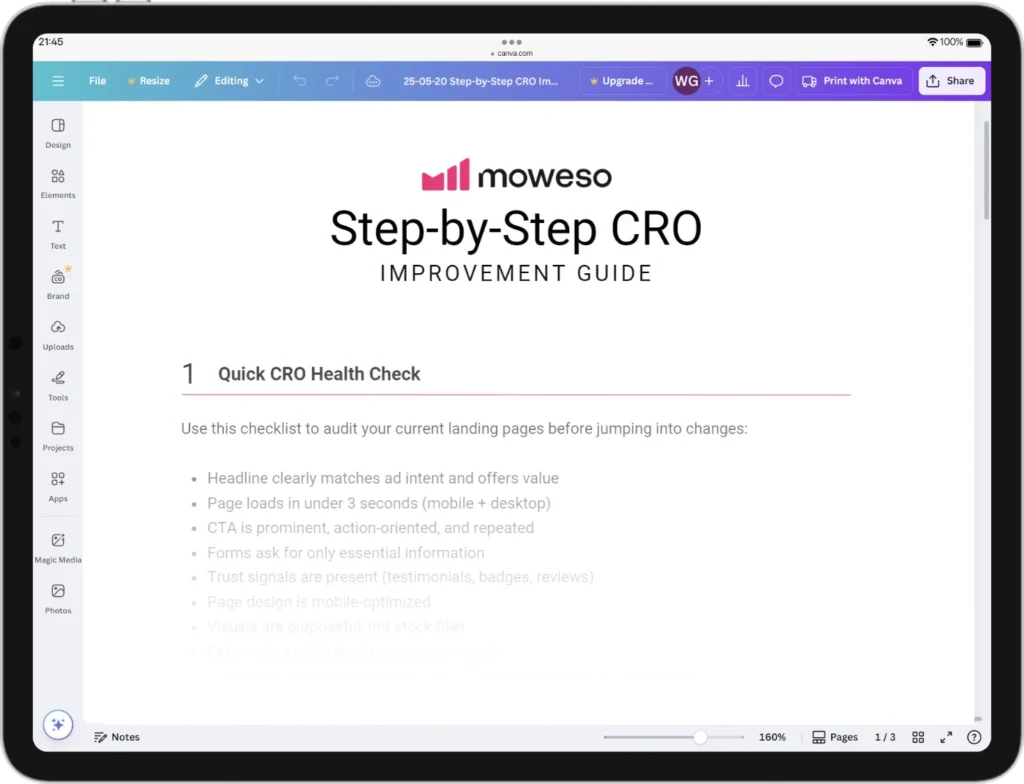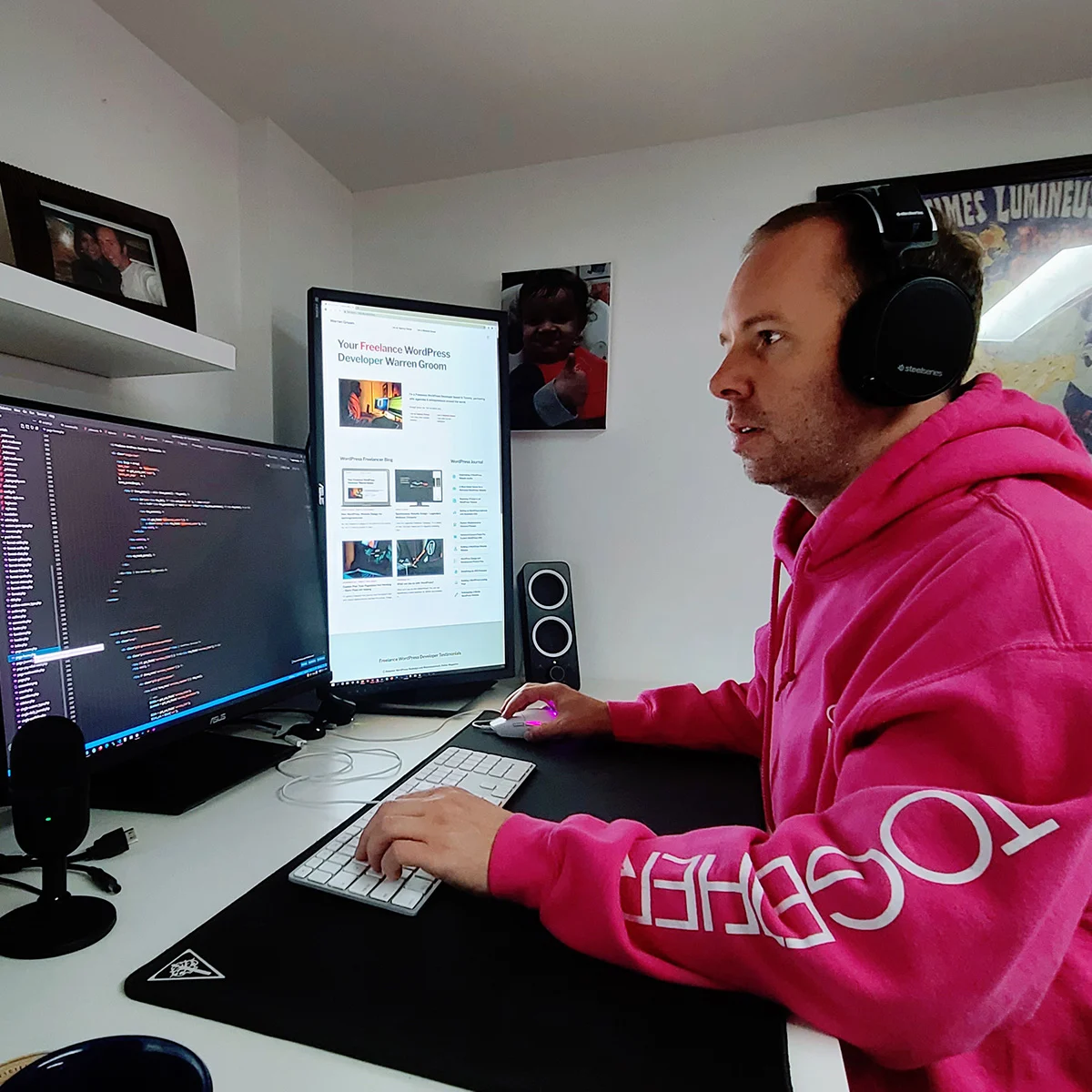It’s one of the most frustrating experiences for any marketer or business owner: your website traffic is steady—maybe even growing, but your leads? Crickets. You’re investing in SEO, running ads, creating content, and yet the conversions just aren’t coming. Why?
This article digs into the root causes of high traffic but low conversions and introduces a powerful solution, Conversion Rate Optimization (CRO). We’ll unpack where the disconnect happens, what to fix, and how to start turning passive visitors into active leads.

Step-by-Step CRO Improvement Guide
Turn more clicks into customers. This step-by-step CRO guide shows you how to optimize landing pages, lower CPA, and boost conversions with proven strategies, checklists, and test ideas—designed for growth-driven teams.
Understanding the Traffic-to-Leads Gap
Not all website visitors are created equal. Some are just browsing, some are researching, and some are ready to take action. If your site is bringing in the wrong kind of traffic, or failing to guide the right visitors to take the next step, conversions will stay low.
This gap between traffic and leads often comes down to one key metric: your conversion rate. It’s the percentage of visitors who take a meaningful action—whether that’s filling out a form, booking a call, or making a purchase. If you’re getting thousands of visits but only a handful of leads, there’s a mismatch somewhere in your funnel.
Before fixing it, you need to know where the disconnect is happening. Are people leaving right after landing on your site? Are they clicking around but never converting? Analytics can help pinpoint the issue, but so can stepping into your visitor’s shoes. What do they see, feel, and want when they arrive?
Common Reasons for Low Conversions
If your website is pulling in traffic but not generating leads, you’re not alone. Many businesses hit this wall—and often, the reasons boil down to a handful of common issues. Let’s break them down.
Targeting the Wrong Audience
You can have the best-designed site in the world, but if you’re attracting people who aren’t interested in what you offer, you won’t get leads. This happens when your content, ads, or SEO keywords attract clicks but not qualified visitors. It’s crucial to align your messaging and targeting with your ideal customer’s pain points and goals.
If you’re scaling and your traffic isn’t converting, you may be attracting the wrong visitors. Here’s how startups can align SEO efforts with conversion goals.
Ineffective Landing Pages
Landing pages should be laser-focused, with one goal and one clear path forward. Too often, they try to do too much—presenting mixed messages, cluttered layouts, or confusing next steps. A strong landing page speaks directly to the visitor’s intent, builds trust quickly, and makes it easy to convert.
Not sure if your landing page is the issue? See our deep dive into why landing pages fail and how to fix them—with real-world examples and actionable tips.
Weak or Missing Calls-to-Action (CTAs)
If people don’t know what to do next, they won’t do anything. A vague or buried CTA can kill your conversions. Your CTAs should be specific, visible, and action-oriented. Think “Get My Free Audit,” not just “Submit.”
Technical Issues Affecting User Experience
Slow load times, broken links, mobile glitches—these all add friction that drives visitors away. Today’s users expect smooth, fast, and intuitive experiences. If your site doesn’t deliver, they’ll bounce before you even have a chance to engage them.
Implementing Effective CRO Strategies
Conversion Rate Optimization, or CRO, is all about making the most of the traffic you already have. It’s not about more clicks, it’s about better results from the clicks you’re already getting. Here’s how to do it right.
A/B Testing and Multivariate Testing

Guesswork doesn’t cut it when it comes to conversion. With A/B testing, you compare two versions of a page element—like a headline or CTA—to see which performs better. Multivariate testing takes it further, testing combinations of changes. Over time, this data-driven approach helps you build pages that convert more consistently.
Enhancing User Experience (UX)
UX is about making your site easy, intuitive, and enjoyable to use. Clean design, simple navigation, fast load times, and logical flow all play a part. If visitors can’t find what they need, or if your page feels overwhelming, they’ll leave. Great UX keeps them engaged and moving toward conversion.
UX isn’t just about design—it’s about guiding your visitor toward action. Here are 7 proven B2B website elements that consistently convert.
Leveraging Social Proof
People trust people. Showcasing reviews, testimonials, case studies, or client logos helps build credibility and reduces perceived risk. When visitors see that others have succeeded with your solution, they’re more likely to take the next step themselves.
Optimizing for Mobile Users
More than half of web traffic now comes from mobile devices. If your site isn’t optimized for smaller screens—think responsive design, fast load times, and mobile-friendly forms—you’re likely losing a big chunk of potential leads. Mobile optimization isn’t optional, it’s foundational.
Conclusion
Getting traffic is only half the battle. If your visitors aren’t turning into leads, something’s broken—and it’s costing you real opportunities. If your website just isn’t converting no matter what you try, it might be time to ask: should you optimize—or start fresh? Read When to Rebuild vs Optimize Your Website to decide.
The good news? You don’t need more traffic. You need smarter pages, clearer messaging, and a smoother path to conversion. Whether it’s refining your audience targeting, simplifying your landing pages, or investing in CRO tactics like A/B testing and social proof, every small improvement can lead to a high-converting B2B website.
Now you know what’s getting in the way. The next step is action.
Ready to turn your traffic into leads? Start with a CRO audit or get expert help to uncover your highest-impact fixes. Because when your website works harder, your business grows faster.

